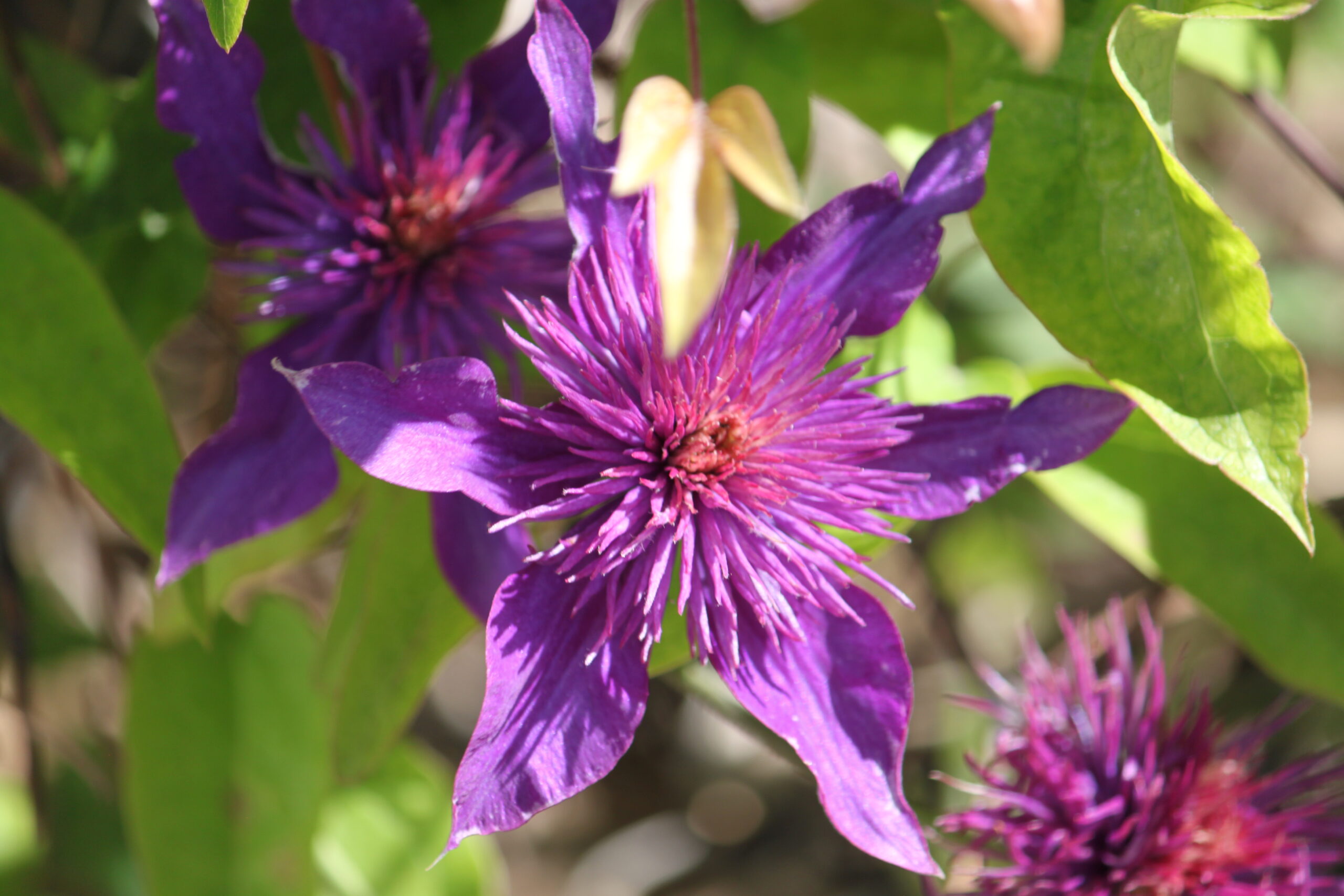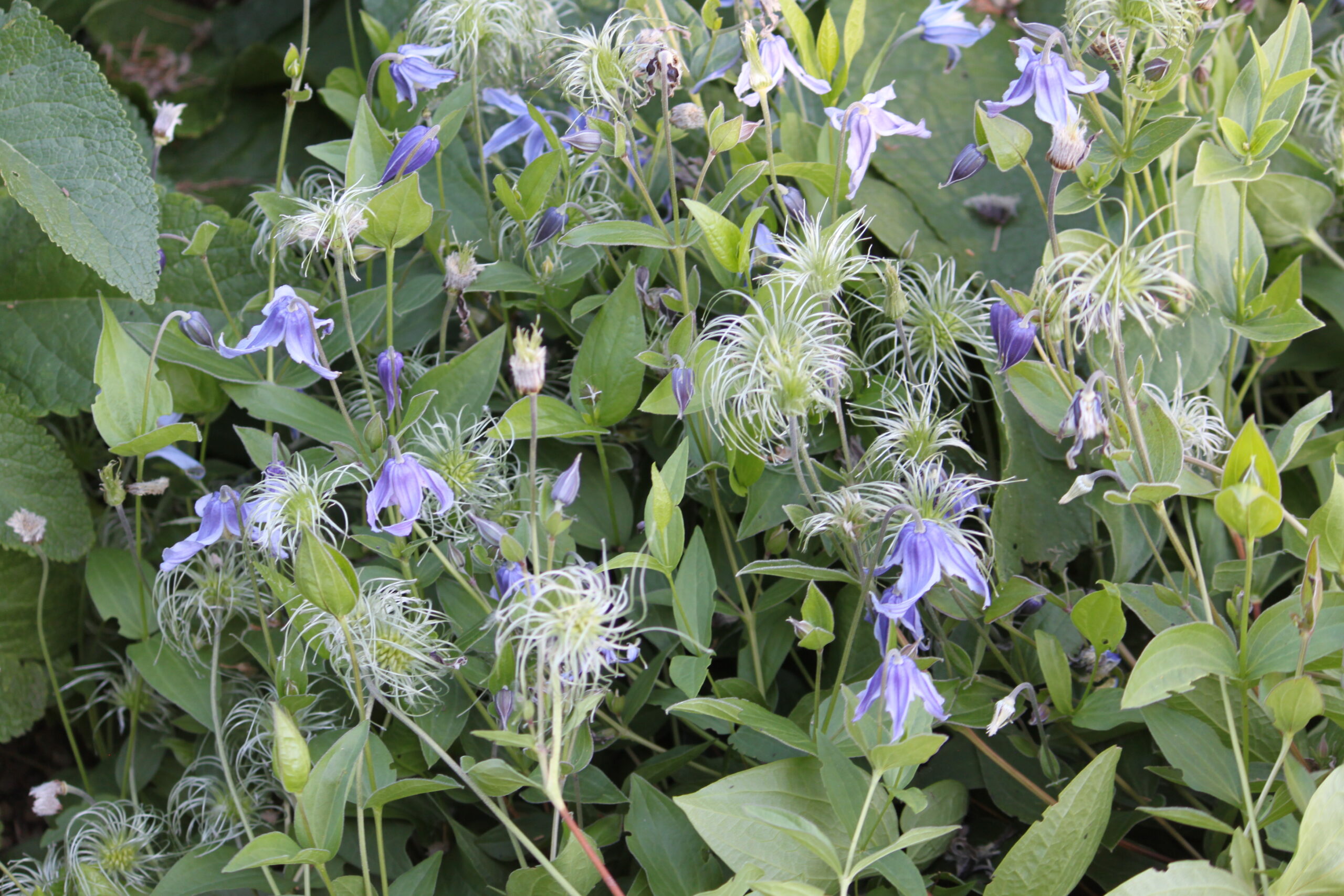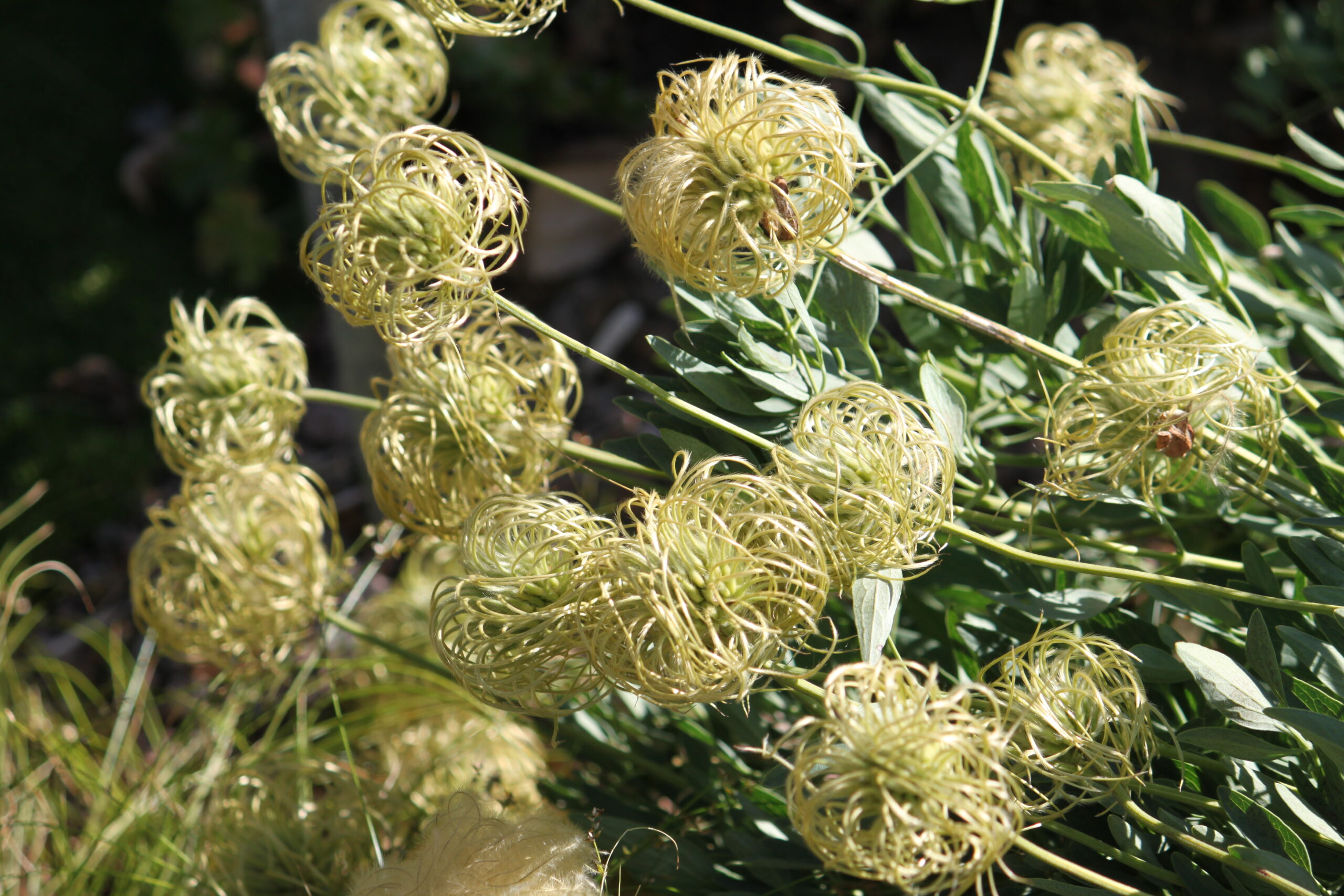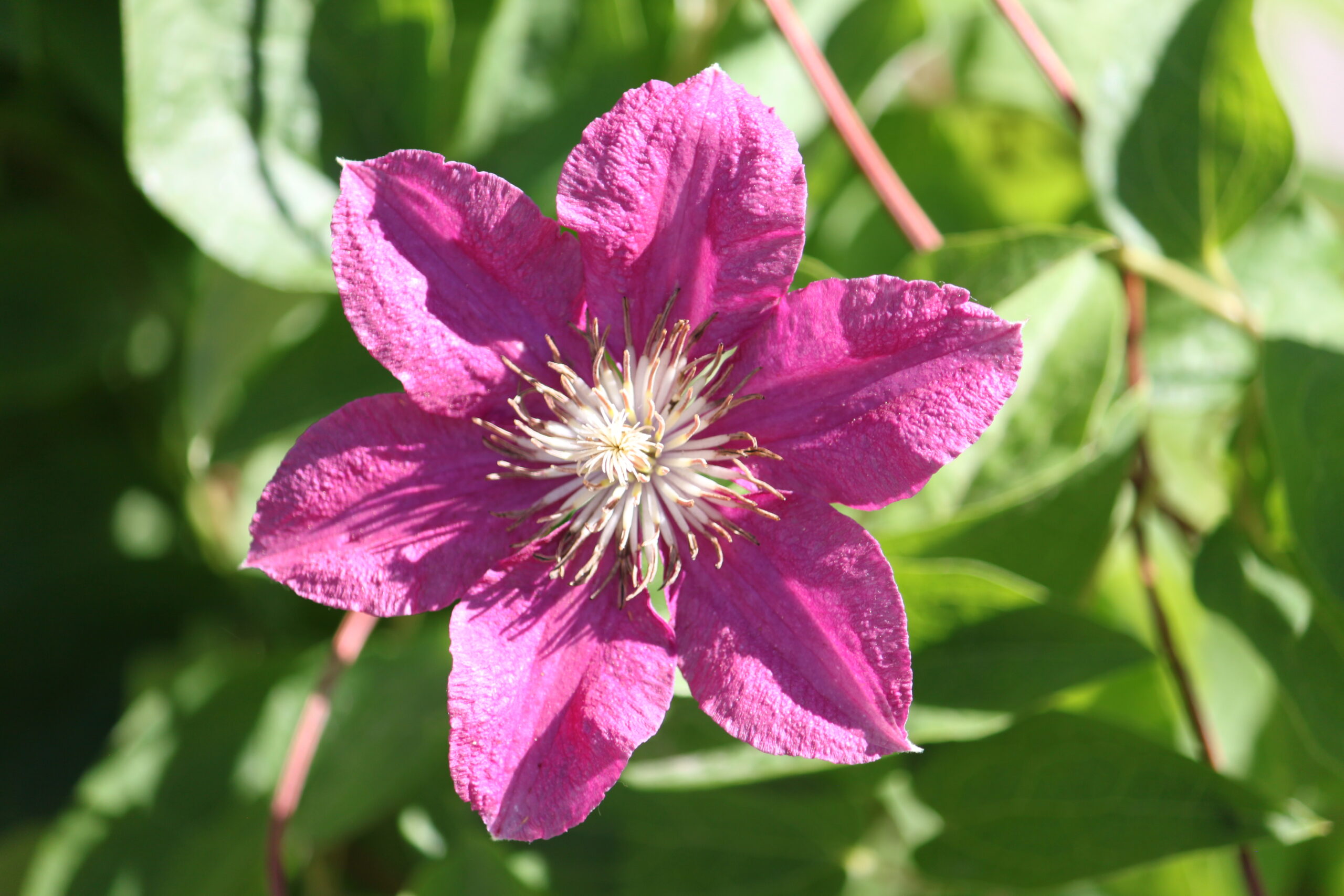Clematis (Greek word meaning vine) is one of the flowering vines better adapted for Colorado.




What colors are clematis known for?
The best known flower colors are the cool shades of purple, blue, pink and white. Hotter shades of red and yellow are also available. Flower shapes range from large, eight-inch hybrids to the dainty bells and honeysuckle blooms of autumn clematis.
When should I plant clematis?
In Colorado, planting clematis in the spring is generally more successful than fall planting. Vines do best in full sun and bloom poorly when planted in areas that have less than 6 hours of sun per day. A trellis or other support is helpful in windy periods.
Where should I plant clematis?
Plant clematis in a soil that drains well and is amended with organic matter such as compost. The crown, the part of the plant where the stem and roots meet, should be about two inches below the soil. Keep plant roots moist and cool by using mulch. However, clematis roots do poorly when the soil around them is water-logged.
Should I prune clematis?
Prune clematis to promote flowering. There are two different kinds of clematis and you need to determine which kind you have before you prune. Woody-stemmed types like the Clematis montana bloom early on last year’s stems. Prune plants after flowering to remove deadwood.
Should I prune large-flowered clematis?
Large-flowered Clematis ‘Henryi’ and Clematis ‘Elsa Spaeth’ hybrid types also should be pruned this way. Types that bloom on the current year’s growth should be cut back in early spring to the first pair of healthy buds. These include Clematis x jackmanii and Clematis ‘Ernest Markham’ hybrids among others.
How long will clematis’ last?
Well-established clematis will bloom for generations.
For more information, see the following Colorado State University Extension Fact Sheet.



